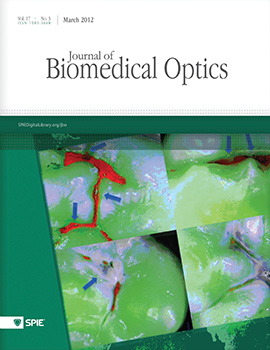Yue Sa, Zhejun Wang, Xiao Ma, Chang Lei, Shanshan Liang, Lili Sun, Tao Jiang, Yining Wang
Journal of Biomedical Optics, Vol. 17, Issue 03, 035002, (April 2012) https://doi.org/10.1117/1.JBO.17.3.035002

TOPICS: Raman spectroscopy, Laser induced fluorescence, Fourier transforms, Atomic force microscopy, Teeth, Spectroscopy, Minerals, Surface finishing, Reflectance spectroscopy, Raman scattering
The safety of at-home tooth bleaching, based upon carbamide peroxide (CP) or hydrogen peroxide (HP) as the active agent, has been questioned. The aim of the present study was to investigate the effects of three differently concentrated home-applied bleaching agents on human enamel under in situ conditions. Sixty specimens were divided randomly into four groups and treated with 10% CP, 15% CP, 20% CP, and distilled water, respectively. Raman spectroscopy, attenuated total reflectance-infrared (ATR-IR) spectroscopy, atomic force microscopy (AFM), microhardness, and fracture toughness (FT) measurements were conducted to determine variations on enamel structure and mechanical properties before and after the bleaching process. Raman revealed little variation of Raman relative intensity after treatment with CP, which was consistent with the results of ATR-IR, AFM, and microhardness analyses. In addition, laser-induced fluorescence (LIF) intensity, and FT showed significant decreases on CP-treated specimens. These findings suggested there were minimal demineralization effects of the three at-home bleaching agents on enamel in situ. However, the decrease of LIF intensity and FT on enamel seemed to be inevitable.



 Receive Email Alerts
Receive Email Alerts